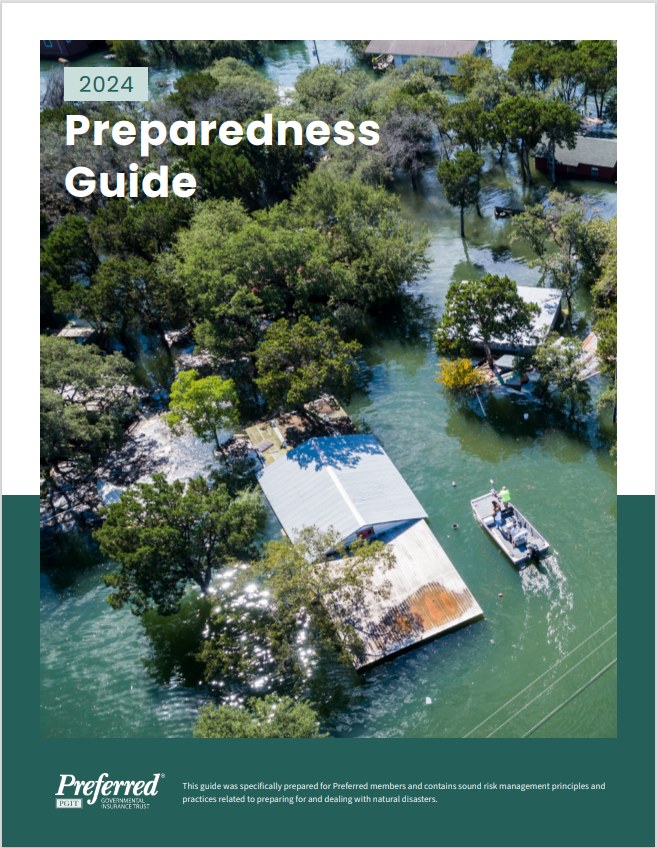How to prepare your organization for a hurricane
A hurricane’s path of devastation may be wide and ongoing for days, sometimes more than a week. For this reason, we’re arming you ahead of time with tips and advice on how to protect your organization from hurricane damage. By starting your planning early, you can take time to thoughtfully work through every action that needs to take place.
The National Hurricane Survival Initiative has created a business survival plan to serve as a comprehensive guide to safeguarding an organization. It includes steps to improve employee safety plus protect property and company data.
Using these guidelines will not only protect your organization from hurricane damage, but also ensure you’re prepared to handle any damages following any disaster. Furthermore, they recommend that you choose a back-up location where your organization could run smoothly if damages occur on the original site and discuss this with all employees. If your organization’s site is damaged, be sure to assess, document and report losses as soon as possible.
More than just knowing hurricane routes out of town, here are a number of critical steps you need to think through, to protect your organization from hurricane damage.
1. Pre-plan for safe data storage
Since there’s typically advance warning when a hurricane approaches, it’s important to transport your data quickly and at the first sign of trouble.
- Ensure your data is backed up regularly and stored in a facility that’s secure and dependable.
- If you use a recovery services vendor, store your data near this vendor.
- If your recovery window is extremely short, consider using electronic vaulting technology. Electronic vaulting allows data to be transferred to an alternate recovery site in mere minutes.
These measures, many of which are courtesy of National Hurricane Survival Initiative, will ensure that your data is where you need it to be in a recovery.
Related: Equipment Disaster Preparedness Series #2
2. Protect your people
Particularly since the onset of COVID-19, our workforces may still be scattered. Some work onsite; some work remotely; still others are traveling.
- Have HR keep track of where each employee typically works and if employees travel, keep track of their travel schedule.
- Create a mass notification system – a central number to call or text, or text messages or emails that are sent out, or a website for employees to check, so that everyone receives notice quickly.
- Create an evacuation plan that includes entrances/exits, stairs, elevators, parking lots and access to the nearest evacuation route.
Related: Disaster Preparedness: Preventing Employee Injury / Illness
3. Protect your property
- Keep an up-to-date inventory of what’s in your premises, including inventory.
- Install shutters or plywood to protect windows and doors from blowing debris.
- Have your roof evaluated to ensure it can withstand a storm.
- Remove any branches or trees adjacent to your building that could potentially fall and damage it.
- Sandbag any areas subject to flooding.
- Anchor and brace any large furniture (bookcases, shelves, filing cabinets) to wall studs.
- Relocate any valuable or fragile possessions.
- Secure all utilities including water heaters, gas tanks and heaters; if necessary, raise them to higher locations to avoid water damage.
- Consider adding gasoline powered pumps to keep the building free from flooding.
- Secure electronics such as computers and other office equipment with straps or Velcro.
- Turn off all the utilities prior to a hurricane making landfall if possible.
4. Protect important documents and information
- Designate important contacts to save that are crucial to your organization’s operations, such as employees, banks, lawyers, accountants, suppliers, etc.
- Back up documents that are not easily produced such as insurance documents, legal contracts, tax returns and accounting statements to avoid water damage.
- Seal these documents in waterproof containers onsite.
- Save all your designated contacts and documents in an alternate, accessible off-site location.
Related: Start the New Year with an updated natural disaster emergency response plan
5. Use a Preparedness Checklist to protect your organization from hurricane damage
The below items should be gathered in one location at your organization should a storm hit while you are on premises. This will help protect the safety of your employees should disaster strike during regular working hours and without ample notice.
- Battery-operated radio or television
- Non-perishable three-day food supply for you and your employees
- Three-day supply of water for you and your employees (one gallon of water per person, per day)
- Coolers and containers for water and washing
- Blankets, pillows, cots and chairs
- First aid kit and first aid manual
- Flashlights, batteries, light-sticks
- Tool kit (basic tools, gloves, etc.)
- Camera and film for documenting damages
- Whistle/signal flare to signal for help
- Tarps, plastic bags, duct tape
- Cleaning supplies, including mops, towels and garbage cans
- Smoke alarms and fire extinguishers
- Electric generator
- Gas for vehicles, generators and other equipment
- Cash, ATM cards, credit cards proper identification
- Emergency contact information
For more information on protecting your organization from hurricane damage, download our FREE 2024 Preferred Preparedness Guide by clicking on the image below. The principles and practices covered in our guide will assist your organization in preventing injuries, protecting your property and your organization’s data.

This article was originally published on Arrowhead’s corporate blog. It is used with permission and has been modified and updated to better fit the needs of our Preferred members.
